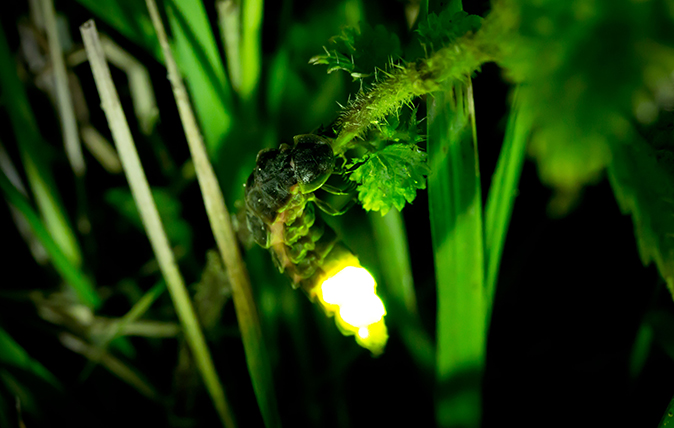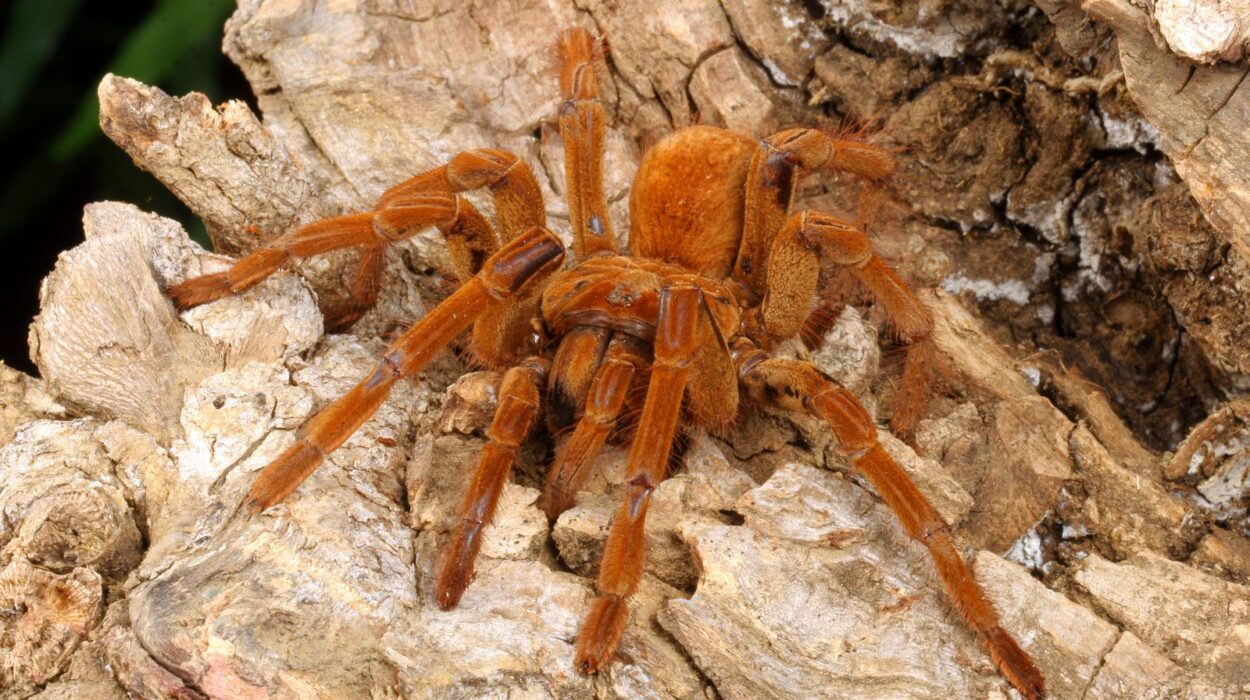Few natural sights are as magical as the soft, ethereal glow of fireflies twinkling on a summer night or the mysterious blue-green shimmer of glowworms lighting up dark caves and forests. To human eyes, this natural light seems almost otherworldly—tiny living lanterns illuminating the darkness without fire, heat, or electricity. Yet behind this beauty lies a remarkable scientific process known as bioluminescence, the ability of living organisms to produce light through a chemical reaction inside their bodies.
Among the most fascinating bioluminescent creatures are glowworms and fireflies. Though they belong to different groups and live in different habitats, they share a common biochemical mechanism that allows them to create “cold light”—a form of light that releases almost no heat. The study of how these insects generate and control light has not only revealed the wonders of evolution but also inspired applications in biotechnology, medical imaging, and environmental science.
Understanding how glowworms and fireflies produce light naturally involves delving into chemistry, physiology, ecology, and evolution. Each of these fields contributes to the story of how light became a language for communication, survival, and beauty in the living world.
The Science of Bioluminescence
Bioluminescence is the production and emission of light by living organisms. It is a type of chemiluminescence, meaning light is generated by a chemical reaction rather than by heat or external light sources. While it might seem rare, bioluminescence is widespread in nature, especially in marine environments where thousands of species—from bacteria to jellyfish—use light for communication, camouflage, or predation.
In all bioluminescent organisms, the process requires two key components: a light-producing molecule called luciferin and a light-producing enzyme called luciferase. When luciferin reacts with oxygen in the presence of luciferase, the chemical reaction releases energy in the form of visible light. In many organisms, additional molecules such as ATP (adenosine triphosphate) or cofactors like magnesium ions may also be required to trigger the reaction.
This light is unique because it is nearly 100 percent efficient—almost all the chemical energy is converted into light rather than heat. That is why bioluminescent light is often referred to as “cold light.” In contrast, a typical incandescent light bulb converts less than 10 percent of its energy into light, losing the rest as heat.
The wavelength, or color, of the light depends on the chemical structure of luciferin and the conditions of the reaction, such as pH and temperature. Fireflies generally emit yellow-green light, while glowworms often produce a greenish or bluish glow. These differences arise from variations in the luciferin-luciferase system between species.
Fireflies: The Famous Lanterns of the Night
Fireflies, also known as lightning bugs, are among the most well-known examples of bioluminescent terrestrial insects. They belong to the family Lampyridae, a group of beetles found in temperate and tropical regions around the world. Despite their name, not all fireflies glow, but those that do use their light for communication, mating, and sometimes defense.
The light-producing organ of a firefly is located in the lower abdomen. This structure, known as the lantern, contains specialized cells called photocytes. These cells house the chemical components required for light production: luciferin, luciferase, oxygen, and ATP.
When a firefly wants to produce light, nerve impulses trigger a supply of oxygen to the photocytes. The enzyme luciferase then catalyzes the reaction between luciferin and oxygen, with ATP providing the energy needed to power the process. The chemical reaction can be summarized as follows:
Luciferin + ATP + O₂ → Oxyluciferin + Light + CO₂ + AMP + PPi
The result is a bright flash of visible light. The firefly can regulate the timing and duration of these flashes by controlling oxygen flow into the light organ. This precise control allows fireflies to create distinctive flash patterns used for communication.
Each firefly species has its own unique flash rhythm—like a secret code. Males typically fly through the air, emitting patterned flashes to attract females waiting on the ground or in vegetation. The females respond with their own flashes, guiding the males toward them. In some species, these flash dialogues can be incredibly complex, with precise timing and spatial cues.
Firefly light also serves defensive purposes. The bioluminescence warns predators that fireflies are distasteful or toxic. Fireflies contain chemicals called lucibufagins, which are similar to cardiac glycosides—substances that can cause nausea or cardiac distress in predators. The glow acts as an aposematic signal, saying “do not eat me.”
The Chemistry of Firefly Light
The chemical mechanism behind firefly light is a masterpiece of natural engineering. The key molecule, luciferin, is a heterocyclic compound that reacts with oxygen in an enzyme-catalyzed oxidation reaction. The enzyme luciferase binds to luciferin and ATP, forming a complex that activates luciferin into a reactive intermediate. Oxygen then reacts with this intermediate, forming an excited-state oxyluciferin molecule.
As the oxyluciferin returns to its ground state, it releases energy in the form of visible photons. The color of the emitted light depends on the microenvironment inside the enzyme’s active site. In most fireflies, the light is yellow-green (wavelength around 560 nanometers), though some species can emit orange or even red light depending on the pH and structural variation of luciferase.
Firefly luciferase is particularly remarkable because it is capable of producing light with high quantum efficiency. This enzyme has been extensively studied and cloned, leading to its widespread use in scientific research. In biotechnology and medicine, luciferase is used as a “reporter gene” to study gene expression, monitor cancer cells, detect ATP levels, and even test the efficacy of drugs. The firefly’s natural light chemistry has thus become an indispensable tool in modern science.
The Physiology of Light Control in Fireflies
One of the most intriguing aspects of firefly bioluminescence is how precisely the insects can turn their light on and off. The flashing is not random—it is controlled through a combination of neurological and biochemical processes.
Fireflies regulate their light emission by controlling the supply of oxygen to their photocytes. In the dark (non-glowing) state, oxygen is prevented from reaching luciferin and luciferase, possibly by the presence of nitric oxide (NO) or by changes in tracheal valve function. When the firefly receives a neural signal to glow, nitric oxide levels decrease, allowing oxygen to diffuse into the light organ and trigger the bioluminescent reaction.
The flashes are also influenced by circadian rhythms and environmental factors such as temperature, humidity, and ambient light. In some species, males synchronize their flashes in large groups, creating spectacular light displays. These synchronized displays are examples of complex biological communication systems that rely on both physics and chemistry for timing precision.
Glowworms: The Hidden Lights of the Dark
Glowworms, despite their name, are not a single group of insects but rather a general term for the larvae and adult females of several bioluminescent species, particularly within the families Lampyridae, Phengodidae, and Arachnocampa. These insects use their glow for different purposes, often depending on habitat and life stage.
The most famous glowworms are found in New Zealand and Australia, belonging to the genus Arachnocampa. Unlike fireflies, these glowworms live in dark, humid environments such as caves and forest undergrowth. Their light is used primarily for predation rather than communication.
Arachonocampa luminosa, for example, produces a beautiful blue-green light that it uses to attract prey. The glowworm larva builds a silk nest on cave ceilings and hangs sticky silk threads coated with mucus. Flying insects and small arthropods are drawn to the light, mistaking it for the night sky or open space. When they fly toward it, they become entangled in the sticky threads, providing the glowworm with an easy meal.
The glowworm’s light organs are located at the posterior end of its body, similar to fireflies, but their structure differs. The light-producing tissue contains cells rich in mitochondria and luciferase enzymes, surrounded by a reflective layer that helps direct the light downward toward the silk traps.
The Chemistry Behind Glowworm Light
While the overall principle of bioluminescence is the same in glowworms and fireflies, the biochemical details differ. Glowworms possess their own unique luciferin-luciferase system, which is structurally and chemically distinct from that of fireflies.
In Arachnocampa glowworms, the luciferase enzyme catalyzes the oxidation of a luciferin molecule derived from a compound similar to xanthopterin—a pigment found in many insects. This reaction also requires oxygen and ATP, producing visible blue-green light. The exact molecular structure of glowworm luciferin has been difficult to determine, and researchers are still uncovering its precise chemistry.
One fascinating aspect of glowworm bioluminescence is its stability. The light can remain constant for hours, unlike the flashing of fireflies. This steady glow is ideal for luring prey in dark environments, acting like a continuous traplight.
Ecological and Evolutionary Roles of Light Production
The ability to produce light provides significant evolutionary advantages, but its role varies depending on the species and environment. For fireflies, light is primarily a communication signal used in mating and defense. For glowworms, it serves as a lure to attract prey. In both cases, the light evolved as a highly efficient tool for survival.
Evolutionary studies suggest that bioluminescence in beetles evolved more than once, possibly starting as a defensive mechanism. The earliest bioluminescent beetle ancestors likely glowed to warn predators of toxicity. Over time, this trait was co-opted for mating communication in adults.
In glowworms, particularly Arachnocampa, the ability to produce light was adapted for predation. This represents an example of convergent evolution—different species evolving similar traits independently to adapt to similar environmental challenges. The biochemical systems of fireflies and glowworms are chemically distinct yet functionally similar, highlighting nature’s creativity in solving the same problem in multiple ways.
Environmental Influences on Bioluminescence
Bioluminescence is sensitive to environmental conditions. Temperature, humidity, oxygen concentration, and light pollution all affect the intensity and timing of glow. Fireflies, for instance, are more active in warm, humid nights when oxygen diffusion is optimal. Artificial light pollution from cities, however, disrupts their mating signals by masking their flashes, contributing to declining firefly populations worldwide.
Glowworms, which depend on darkness to attract prey, are also affected by changes in environmental conditions. Excessive tourism in glowworm caves, pollution, and habitat destruction threaten their delicate ecosystems. Conserving these environments is essential not only for ecological balance but also for preserving one of the most mesmerizing natural light shows on Earth.
The Physics of Bioluminescent Light
The light produced by glowworms and fireflies is remarkably efficient. Nearly all the chemical energy in the luciferin-luciferase reaction is emitted as photons. The emitted light typically falls within the visible spectrum—between 480 and 600 nanometers—depending on species and environmental factors.
The brightness and color of bioluminescence depend on the reaction’s kinetics and the optical properties of the light organ. Some species have reflective layers made of uric acid crystals or other materials that enhance brightness by directing light outward. In fireflies, specialized structures in the cuticle act as optical lenses, improving the efficiency of light emission.
This level of biological optimization has attracted great interest from physicists and engineers studying how nature achieves such energy-efficient light generation. Understanding these mechanisms could lead to the development of sustainable lighting technologies and advanced optical materials.
Biotechnological and Medical Applications
The study of bioluminescence has led to revolutionary applications in science and medicine. Firefly luciferase, in particular, has become a standard tool in molecular biology. By inserting the luciferase gene into cells or organisms, scientists can visualize biological processes by measuring light output.
In medical research, bioluminescence imaging allows scientists to track the spread of cancer cells, monitor infection progression, or evaluate drug efficacy without invasive procedures. Since luciferase reactions require ATP, they also serve as indicators of cellular energy levels and viability.
In environmental monitoring, bioluminescent assays are used to detect pollutants and toxins. For instance, genetically modified bacteria containing luciferase genes emit light when exposed to toxic substances, providing a simple and sensitive method for water quality testing.
Beyond laboratories, the study of natural light production has inspired advances in nanotechnology, photonics, and bioengineering. Researchers are exploring ways to integrate bioluminescent systems into living materials, bio-lights, and even sustainable illumination systems.
Communication and Behavior
Bioluminescent insects have evolved intricate communication systems based on light signals. In fireflies, flash patterns serve as species-specific mating codes. Some species engage in synchronized flashing, where hundreds or thousands of males flash in unison, creating a breathtaking natural spectacle. This synchronization likely evolved to improve mating success by increasing visibility and coordination.
Interestingly, some predatory fireflies exploit this communication system. Females of the genus Photuris mimic the flash patterns of other firefly species to lure males as prey—a strategy known as aggressive mimicry. The unfortunate males respond, expecting a mate, only to be captured and eaten.
Glowworms, though not communicative in the same way, use light behaviorally to manage energy. Their glow can be modulated depending on hunger or environmental cues, allowing them to optimize prey capture. This behavioral control demonstrates that bioluminescence is not just a static trait but a dynamic adaptation responding to ecological demands.
Evolutionary Origins and Genetic Control
The genes responsible for bioluminescence have fascinated scientists for decades. Firefly luciferase genes have been sequenced and studied extensively, revealing how evolution modified enzyme structures to fine-tune color emission and reaction rates.
Comparative genetic analyses suggest that luciferase enzymes in different species may have evolved from ancestral fatty acid–degrading enzymes or acyl-CoA synthetases. Through mutation and natural selection, these enzymes acquired the ability to catalyze light-producing reactions.
In glowworms, the luciferase enzyme is structurally unrelated to that of fireflies, indicating an independent evolutionary origin. This independent evolution demonstrates how nature can repeatedly find similar biochemical solutions to different ecological challenges.
The Cultural and Aesthetic Significance
Beyond science, fireflies and glowworms have long held a special place in human imagination. In literature, art, and folklore, they symbolize mystery, love, and the fleeting beauty of life. Ancient poets wrote about fireflies as “stars of the earth,” and in many cultures, their glow was believed to represent the souls of ancestors or spirits guiding the living.
Today, firefly festivals in Japan, Malaysia, and other countries celebrate these insects as symbols of natural wonder. Glowworm caves in New Zealand attract thousands of visitors each year, offering a rare glimpse into a world illuminated by living light.
Their beauty, however, is more than aesthetic—it is a reminder of how deeply life and chemistry intertwine, and how the natural world creates elegance through adaptation.
Conservation of Bioluminescent Insects
Despite their enchantment, both fireflies and glowworms face serious threats. Urbanization, pesticide use, habitat loss, and artificial light pollution have led to declining populations worldwide. The bright lights of cities interfere with their communication and breeding, while habitat destruction removes the moist, dark environments they need to survive.
Conservation efforts focus on protecting natural habitats, reducing light pollution, and encouraging public awareness. Simple measures—such as turning off unnecessary lights at night, preserving wetlands, and avoiding pesticide overuse—can help sustain populations of these luminous insects.
Bioluminescent creatures are indicators of healthy ecosystems; their decline often signals broader environmental issues. Protecting them therefore means preserving the ecological balance that supports countless other species, including our own.
Conclusion
The natural light of glowworms and fireflies is one of the most enchanting phenomena in the living world. It is the result of millions of years of evolutionary refinement, where chemistry, biology, and behavior converge to create a perfect balance of function and beauty.
Through the elegant dance of luciferin and luciferase, these small insects harness the power of chemistry to illuminate the night—communicating, hunting, and surviving through the quiet language of light.
Their glow reminds us that nature’s most extraordinary technologies often come from the smallest and simplest forms of life. From their soft, flickering lights, humans have drawn inspiration for scientific discovery, artistic expression, and environmental awareness.
In understanding how glowworms and fireflies produce light naturally, we glimpse not only the mechanics of bioluminescence but also the creativity of evolution itself—a creativity that continues to shine, silently and beautifully, in the living night.






